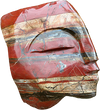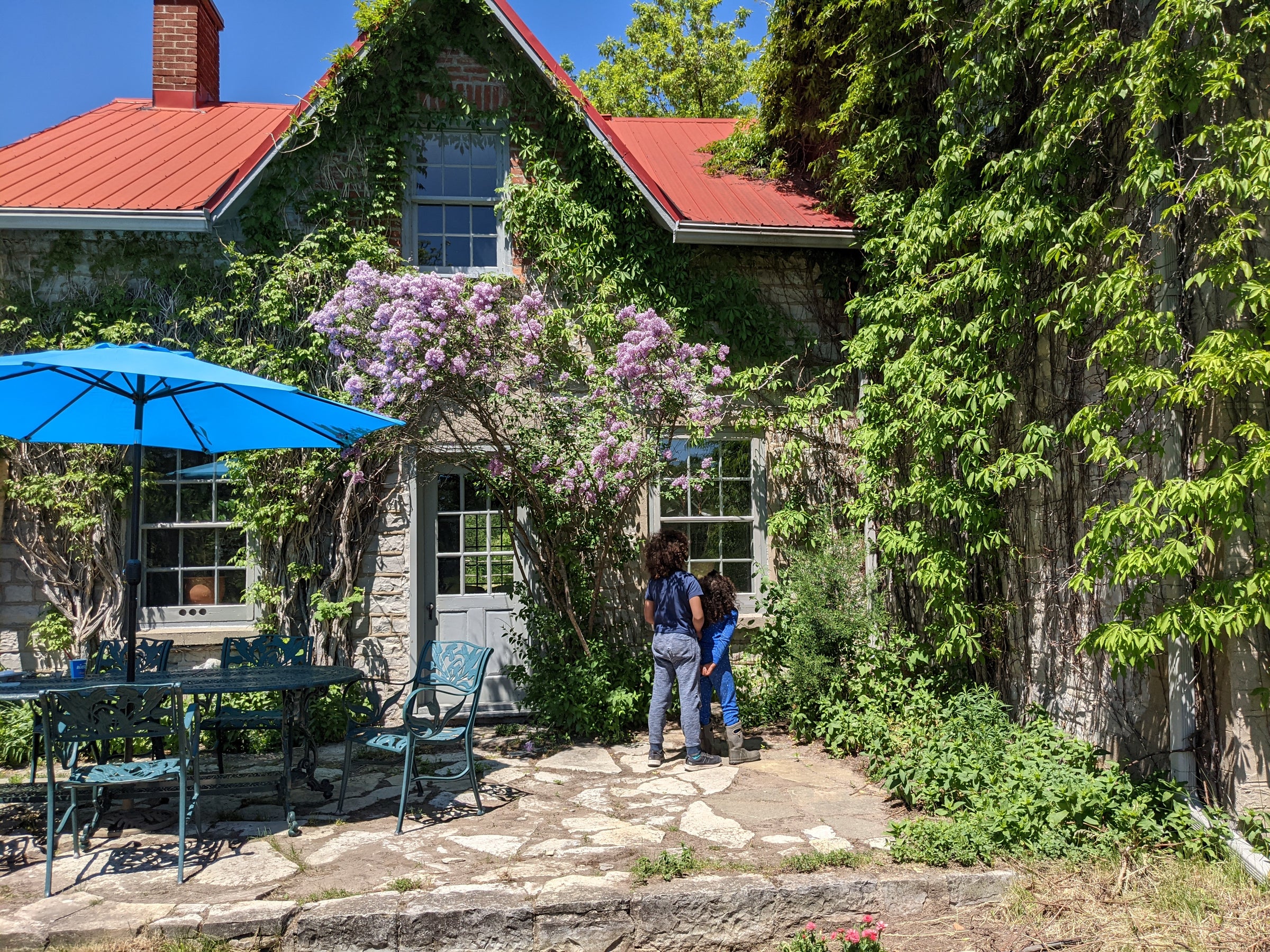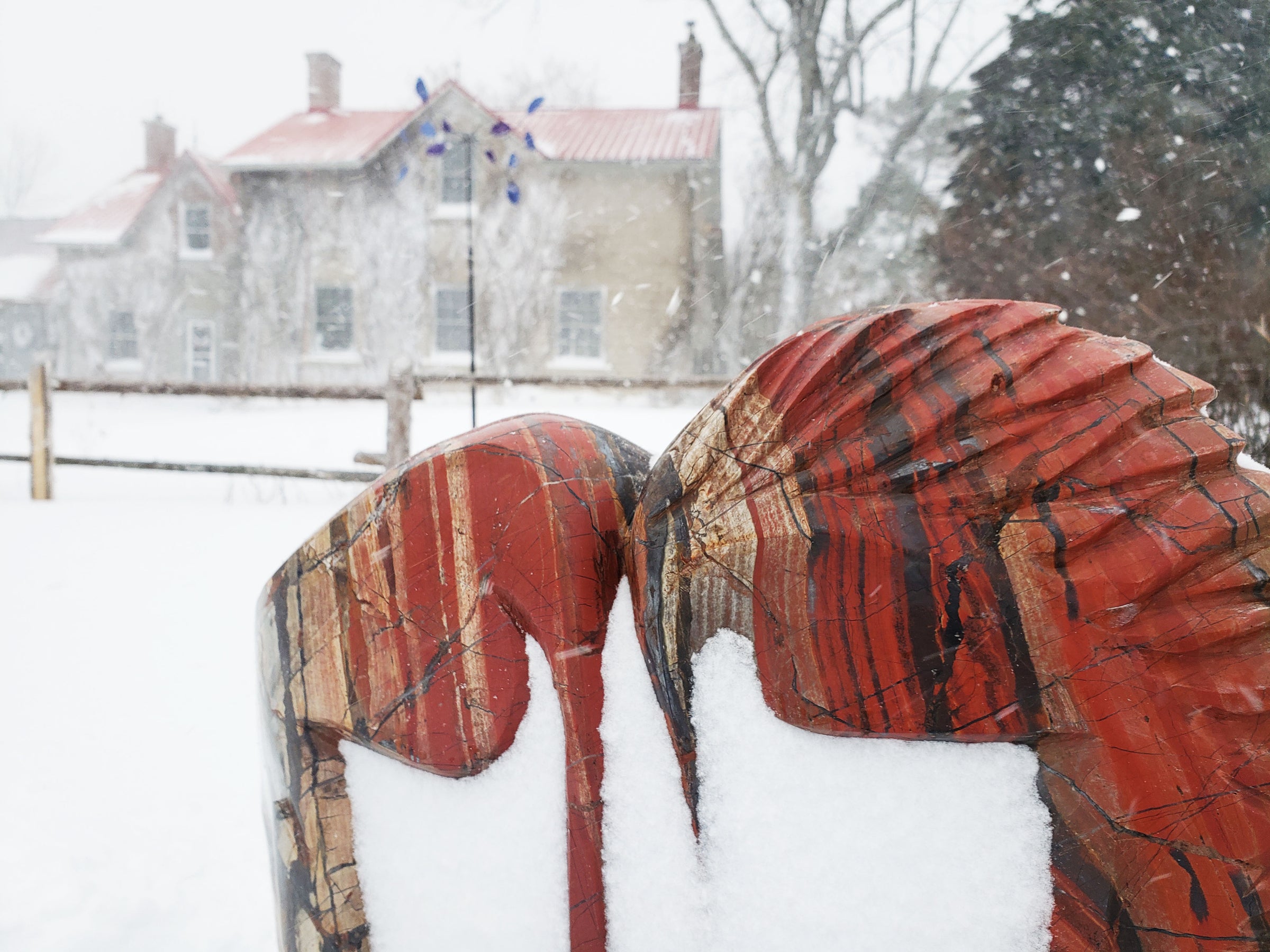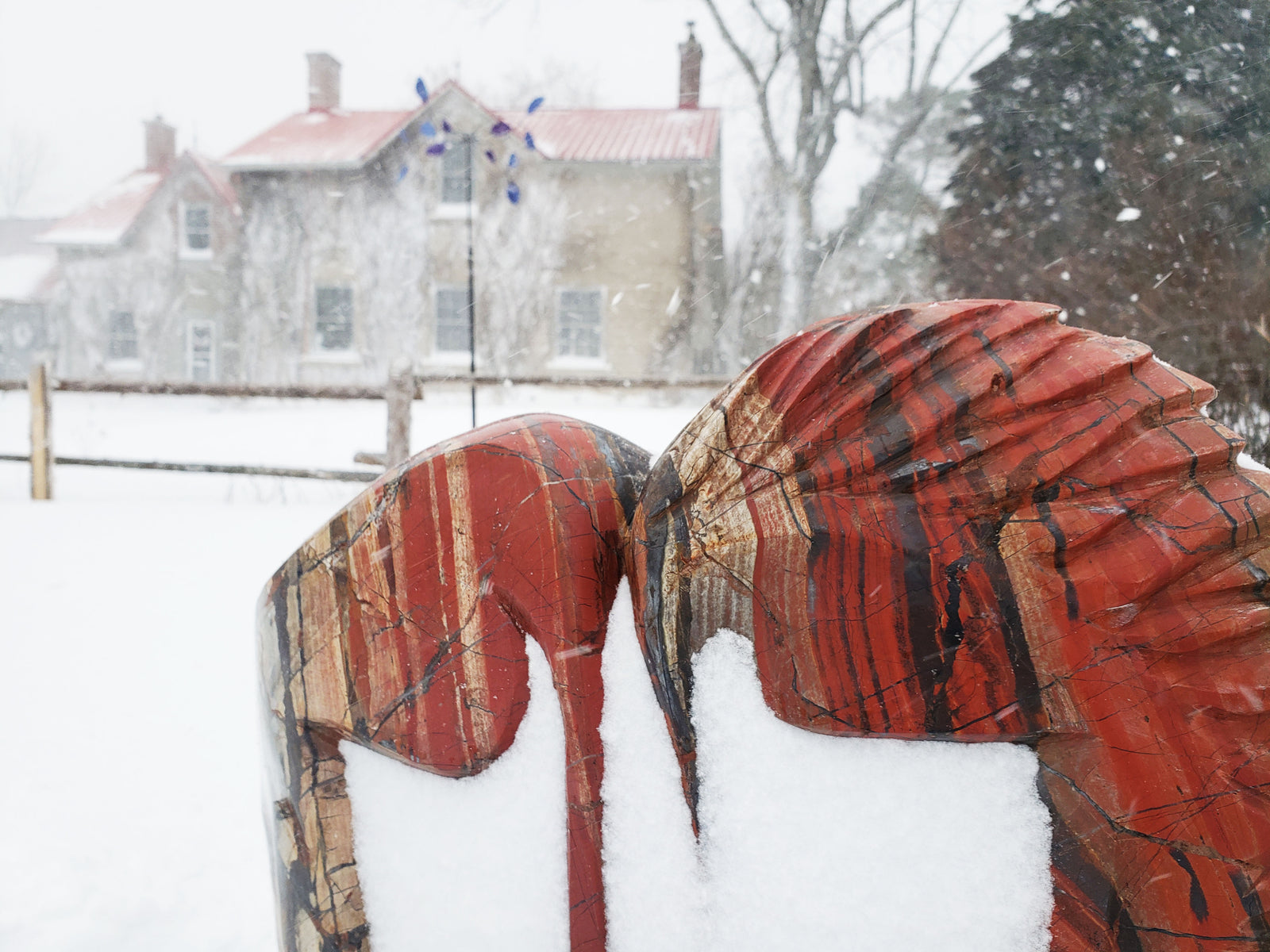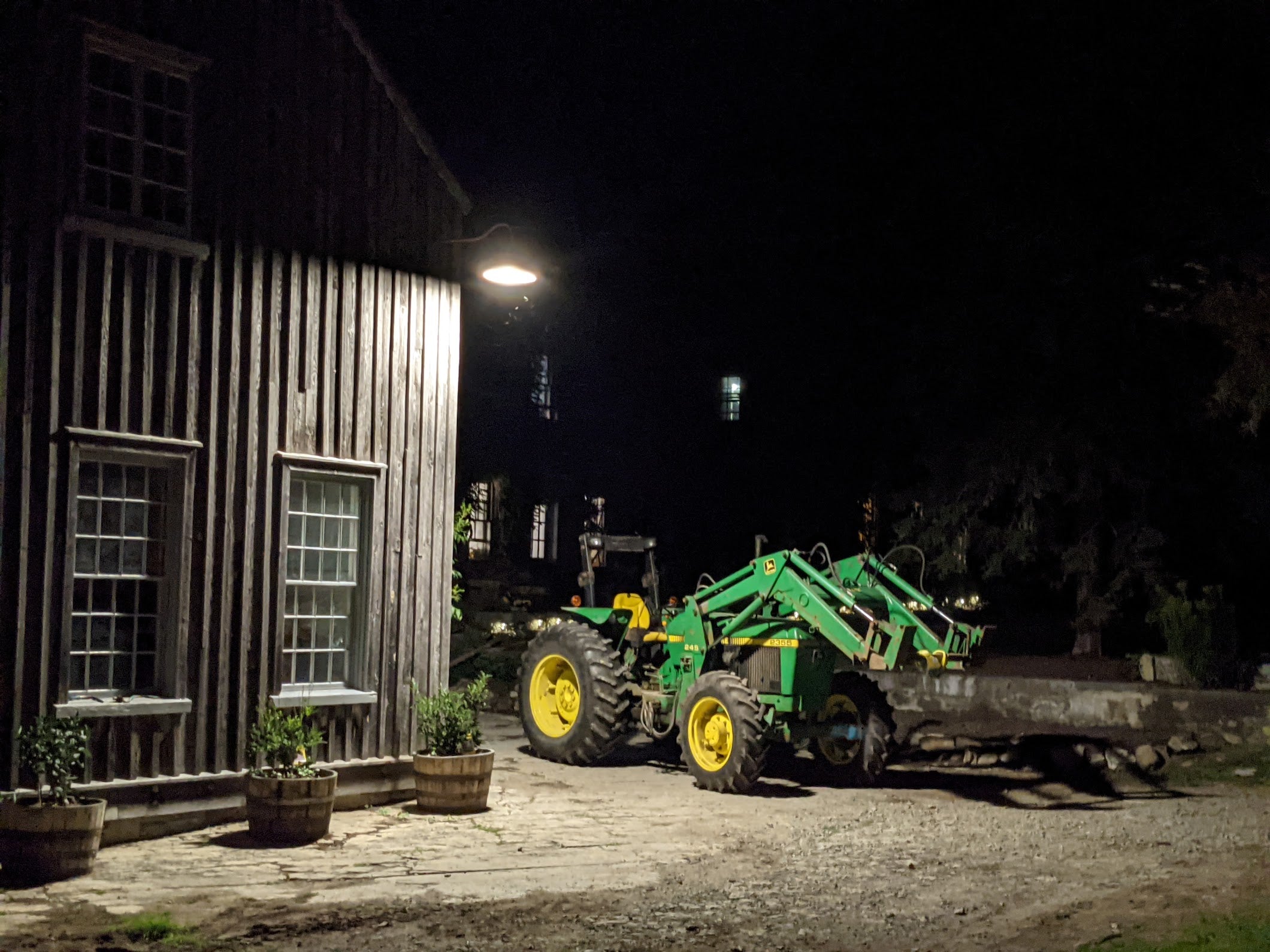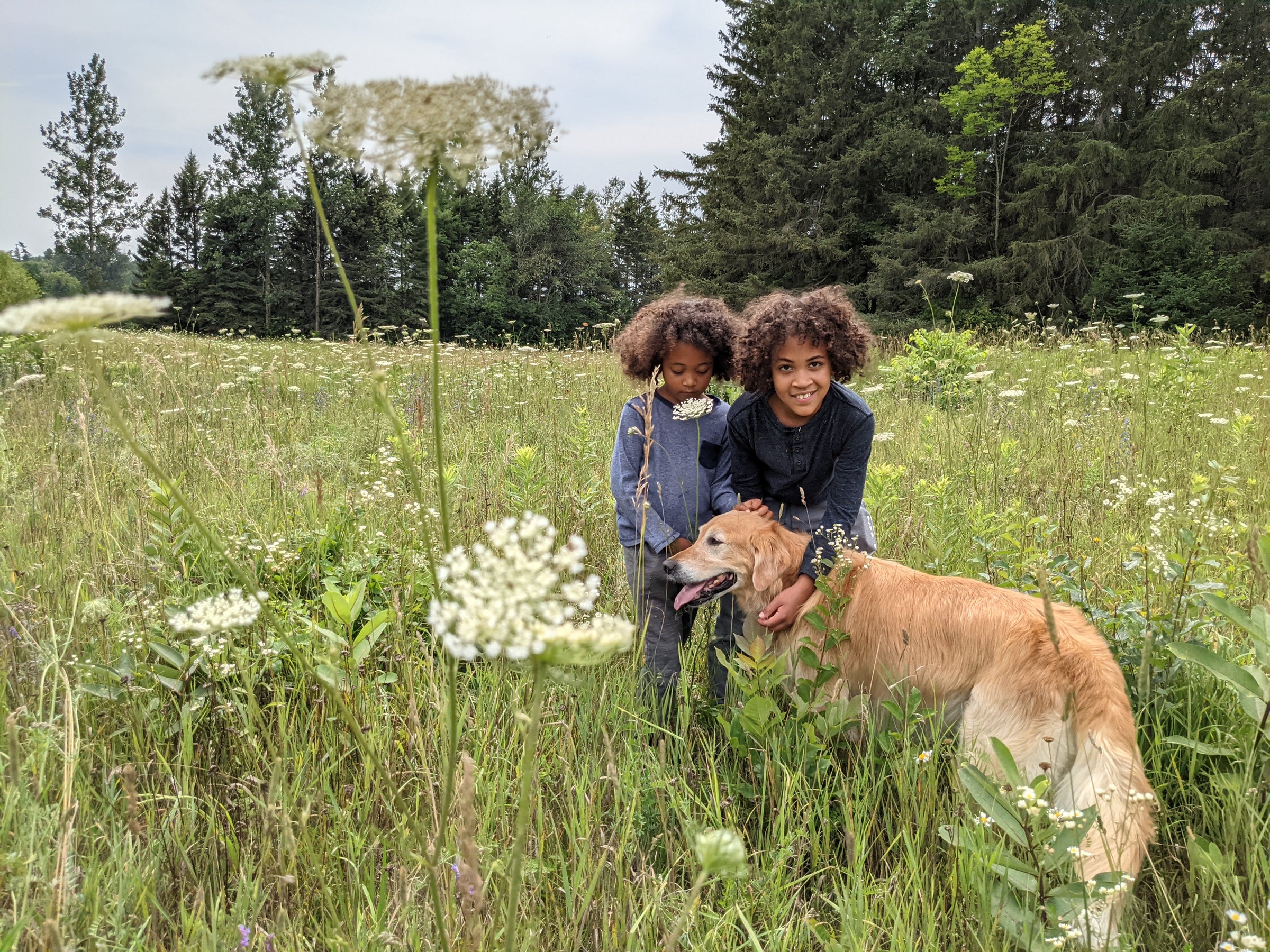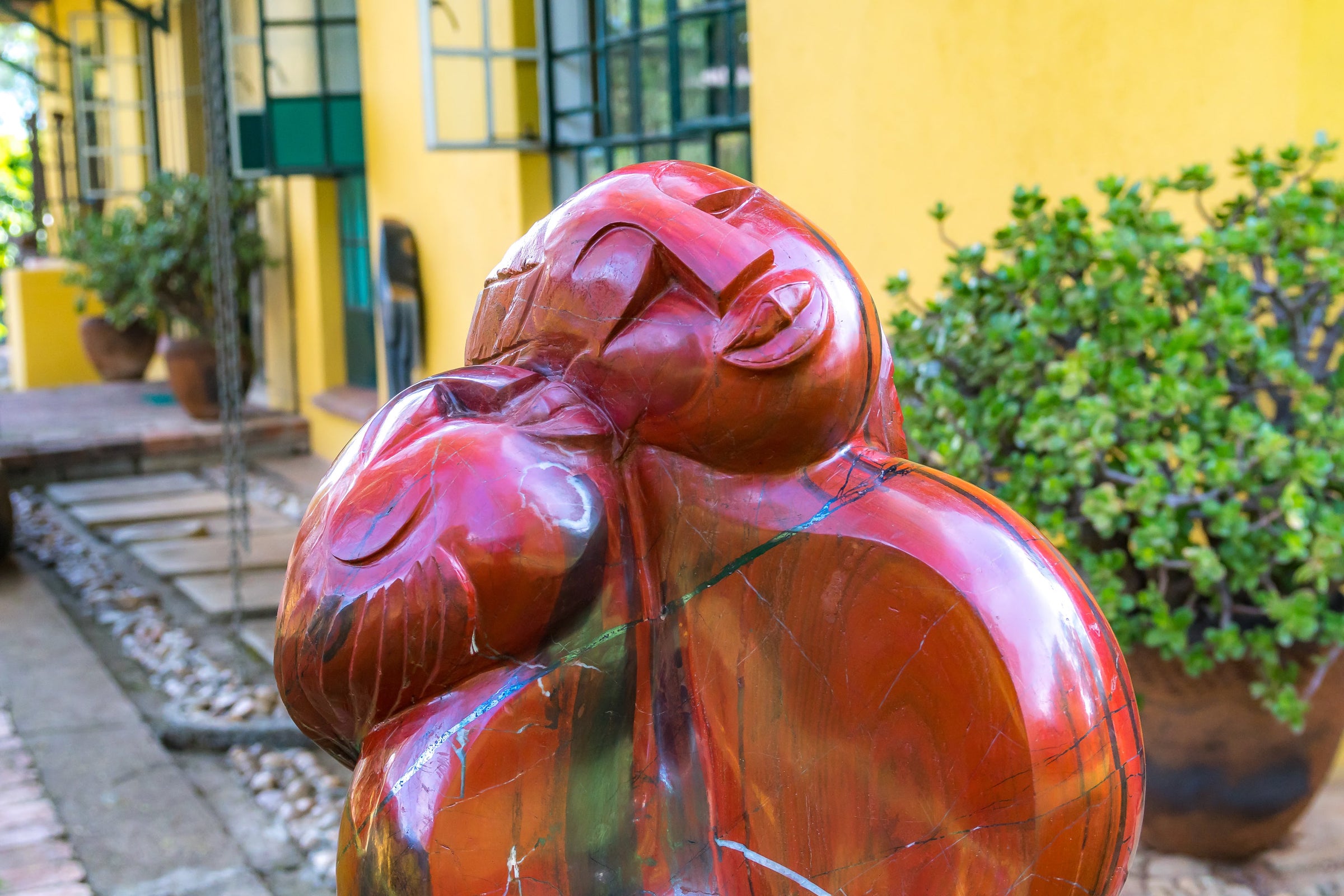We met as highschool exchange students in the 1990s, and married during graduate school.
Gillian finished a PhD in biochemistry and then trained as a physician. William did a doctorate in anthropology and moved into exploring experimental art, historical preservation and regenerative agriculture.
Our two children help on the farm and in the gallery, sometimes joined by their friends or cousins, and never far from their dogs.

Archeological and archival evidence suggests that the first hewn limestone structures on the sculpture farm were built in the 1700s, a time of slavery and ethnic cleansing when settlers were pushing from the shores of the Lake Ontario and the St. Lawrence River deep into the old-growth forests of the interior, deporting the original owners of the land.


It is hard for people of today to imagine what the land looked like before the timber industry arrived in Canada to devour the forests. The Sculpture Farm was originally part of a vast oak savanna which produced enormous annual harvests of nuts, meat and vegetables. By the 1850s almost the entire shore of Lake Ontario had been clearcut and most of the ancient mother trees were harvested. In Eastern Ontario, the timber industry pushed into more remote and northern areas and the land was converted into small family-owned commercial farms. Much of the land in Kingston, including at the sculpture farm, has a very thin layer of soil over limestone bedrock, a unique ecosystem known as an "Alvar." Farms like this were of marginal value as cropland and were essentially converted into enormous grass-producing factories to feed the beef and dairy industries.
By the 1960s, after a century+ of cattle, most of Kingston's original ecosystems were deleted and the land was severely degreaded. At this moment, a visionary ecologist planted over 40,000 trees. He also mapped two important remnants of biodiversity in areas where cows had difficulty grazing like steep slopes, marshy areas, and property lines. Even a few dozen massive mother trees persisted: the first generation of saplings which sprouted after the ancient ones fell.
Today a vigorous, maturing, mixed-species forest is brimming with wildlife. We are propagating remnant biodiversity and reintroducing rare understory plants. Visitors wander a growing network of trails, enjoying serendipitous encounters with art and nature.
Pack a picnic or your favorite beverage. Come reflect on the land's capacity to regenerate. Imagine an even more wonderful future.
We welcome people from all backgrounds to explore the Sculpture farm.

